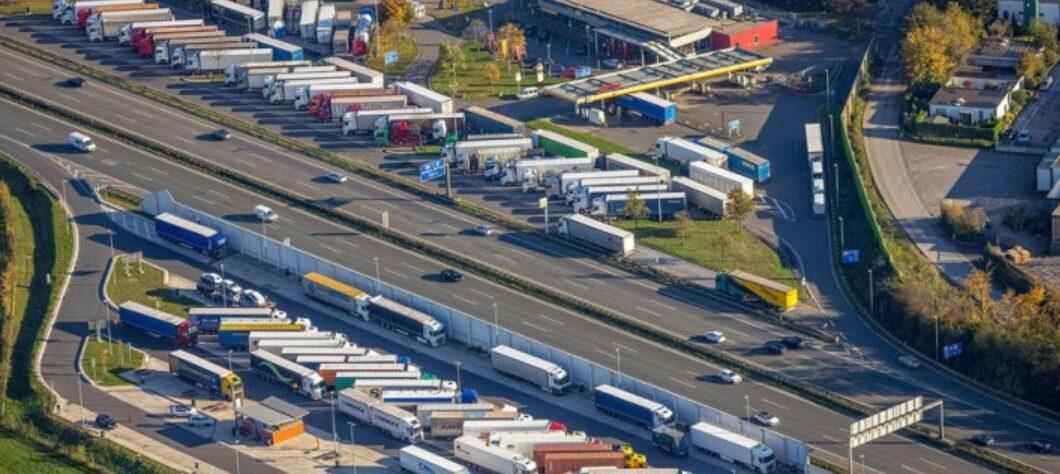Parking spaces for trucks along the freeways are scarce. In future, scanners will be used so that at least the existing storage space can be optimally used. Drivers can use an app to find free spaces.
The Autobahn GmbH des Bundes has started a digital pilot project at the Wiesbaden-Medenbach rest area on the A3 to improve the utilization of the scarce truck parking spaces. Laser scanners record in real time how many truck parking spaces are available at a rest area, as Gerd Riegelhuth from Autobahn GmbH explained on Thursday. Drivers can have this information displayed to the minute in an app. This makes it easier to plan rest periods.
The Parliamentary State Secretary at the Federal Ministry of Transport, Oliver Luksic (FDP), said that the great lack of truck parking spaces on German motorways is a central issue for the federal government. The parking spaces should be massively expanded. The CEO of Autobahn GmbH, Stefan Krenz, called it “unacceptable” that trucks were parked on hard shoulders or on and off the highways because the drivers couldn’t find a parking space.
Nationwide rollout planned
According to Autobahn GmbH, just under 3,000 truck parking spaces are missing in the area of responsibility of the West branch, which includes parts of Hesse, Rhineland-Palatinate and Saarland. After successful commissioning in Wiesbaden-Medenbach, the new system for the digital parking space search is to be used nationwide – initially at rest areas with more than 50 parking spaces on particularly busy motorways.
Hesse’s Transport Minister Tarek Al-Wazir (Greens) explained: “Even after the transfer of responsibility for motorway tasks to the federal government at the beginning of 2021, there is still a high need for truck parking spaces in Hesse.” The state government made great efforts by the end of 2020 to increase the number of parking spaces. In addition, with the help of telematics, the parking space capacity at rest stops has been increased without having to take up additional space.
Slight relaxation compared to 2019
The officials of Hesse’s largest police motorway station in Central Hesse, who are responsible for almost 490 kilometers on the A 5 and A 45, among other things, notice a slight relaxation in the situation compared to 2019. “It certainly has something to do with the pandemic, but it also has something to do with it
To do expansion and improvement measures at rest areas,” said a spokesman for the Central Hesse police headquarters. “Ultimately, we now have to reassess the situation a bit after the pandemic.” In 2019, the officials counted between 500 and 600 illegally parked trucks per night in their area of responsibility.
Drivers who have their statutory rest periods on their backs and can no longer find a regular place sometimes use emergency bays and hard shoulders or park in the entrances and exits of service areas. That was out of necessity, because they had to take a break, according to the ADAC Hessen-Thuringia. But it represents a danger for the truck driver as well as other road users. It is therefore particularly tight at the rest areas and parks on the heavily frequented transit routes such as the A 3, A 5 or A 45.
Up to 25,000 missing parking spaces nationwide
According to ADAC traffic expert Wolfgang Herda, Germany-wide one has to assume that there is a lack of 23,000 to 25,000 truck parking spaces on the motorways. The bottlenecks will probably get worse with increasing international freight traffic.
The problem of the lack of truck parking spaces is neither new nor can it be solved quickly. “In general, it’s like this: All traffic forecasts of the past decades, especially those aimed at freight traffic, have been overtaken by reality,” said Herda. The development in road haulage was systematically underestimated and the transport infrastructure was not adapted accordingly.
From the expert’s point of view, the only remedy is a mix of several measures: the expansion of parking space capacities on the motorways, optimization through parking guidance systems – and alternative ideas. For example, agreements could be made with companies that drivers can rest at night in company or supermarket areas in the industrial parks along the motorways.
